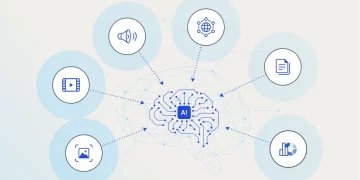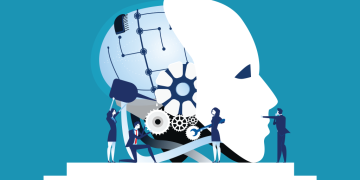In the fast-evolving landscape of artificial intelligence, new tools and platforms are emerging at an unprecedented pace. From no-code AI builders and generative content engines to intelligent analytics dashboards and automation frameworks, the possibilities seem limitless. However, for many organizations—especially startups, SMEs, and resource-conscious teams—the challenge is not simply accessing the newest tools, but making the most of what they already have.
With limited budgets, personnel, or infrastructure, the question becomes: How can you take advantage of AI’s rapid innovation without overextending your existing resources? The answer lies in strategic selection, thoughtful integration, and purpose-driven application of AI tools to solve specific problems, rather than chasing every technological trend.
Below, we explore key strategies for using today’s cutting-edge AI tools effectively, even when your available resources are modest.
1. Start with a Clear Definition of Project Goals
AI is a means to an end—not the end itself. Whether your project involves automating tasks, enhancing customer experience, speeding up content creation, or improving decision-making, the first step is to define what success looks like.
A well-scoped project allows you to:
- Match tools to specific outcomes
- Avoid unnecessary complexity
- Identify measurable performance indicators (e.g. time saved, conversions improved)
By focusing on outcomes, not features, you can filter tools based on real utility, not hype.
2. Leverage Freemium and Open-Source AI Tools
One of the most practical ways to innovate without overspending is to tap into the growing ecosystem of free or freemium AI solutions. Many of these tools are developed by leading research institutions, AI labs, or open communities and offer surprisingly robust functionality.
Examples include:
- ChatGPT (free tier) for drafting content, generating ideas, or answering research questions
- Hugging Face Transformers for access to pre-trained models in NLP and computer vision
- KNIME or RapidMiner for no-code data analysis and machine learning
- Google Colab for free cloud-based notebooks with GPU support for small-scale ML experiments
These resources allow small teams to experiment and build MVPs without significant investment.
3. Use Automation to Maximize Human Capacity
AI is most effective when it handles the repetitive and time-consuming tasks that drain human productivity. Rather than trying to build complex, end-to-end AI systems, look for narrow use cases where simple automation can free up your team to focus on higher-value work.
Examples:
- Use AI-powered transcription tools (e.g., Whisper, Otter.ai) to convert meetings into searchable notes
- Integrate AI chatbots (e.g., Intercom, Drift) to handle basic customer queries
- Apply AI summarizers to extract insights from long documents or reports
These small but strategic uses of AI can compound into significant resource savings across a project lifecycle.
4. Choose Modular, Scalable AI Platforms
Instead of investing in all-in-one enterprise AI solutions, look for modular platforms that can be integrated piece by piece. Platforms like Zapier with AI, Notion AI, or Microsoft Copilot provide incremental intelligence that fits into tools you’re already using—such as spreadsheets, docs, email, or task managers.
This approach lets you:
- Avoid massive upfront costs
- Scale gradually as needs evolve
- Retain flexibility by mixing and matching tools across departments
5. Repurpose and Reuse Internal Data
AI tools become exponentially more useful when powered by data that’s already within your organization. Instead of purchasing large datasets or investing in new data infrastructure, repurpose:
- Archived emails and customer support tickets for training customer service chatbots
- Past project documentation and reports for AI-powered search and knowledge extraction
- Sales data and CRM notes for training lead-scoring models
Data you already own can be an incredibly valuable resource—if you apply the right AI tools to extract and apply insights from it.

6. Engage Cross-Functional Team Members
AI doesn’t need to be siloed in your IT or data science department. With user-friendly tools now available across industries, marketers, designers, product managers, and analysts can directly engage with AI in their own workstreams.
Encourage each team to:
- Identify one workflow where AI could save time or improve results
- Run a pilot with minimal setup
- Share outcomes and tools that worked best
This grassroots approach helps distribute innovation across your organization without hiring new talent or building a formal AI department.
7. Pilot Before You Scale
Many AI tools promise enterprise-scale transformation, but not all of them work well in practice—or within your context. Use short, targeted pilot programs to validate tools before investing further.
Keep pilots small and focused:
- Set a 2–4 week test period
- Choose a single team or project
- Track clear KPIs (e.g. task duration, output quality, satisfaction)
Pilots let you iterate fast, minimize risk, and make data-informed decisions about where to scale AI adoption.
8. Track ROI and Reinvest Smartly
To get long-term value from AI, it’s essential to track results and reinvest where the impact is clearest. That could mean:
- Increasing usage of a content tool that drastically improves output speed
- Adding more licenses for a chatbot that cuts customer wait times
- Investing in training for tools already gaining traction among team members
By doubling down on what works, you build a self-sustaining cycle of productivity and innovation.
Conclusion: Strategic AI Adoption Starts with What You Have
You don’t need an army of data scientists or a multi-million-dollar tech stack to benefit from AI. With thoughtful planning, focused goals, and a willingness to experiment, even small teams can use today’s fast-evolving AI tools to drive measurable progress.
The key is not to chase every breakthrough—but to apply the right innovations, at the right time, to the right problem. That’s how you turn limited resources into transformative results—and how your organization stays competitive in the age of intelligent systems.











































